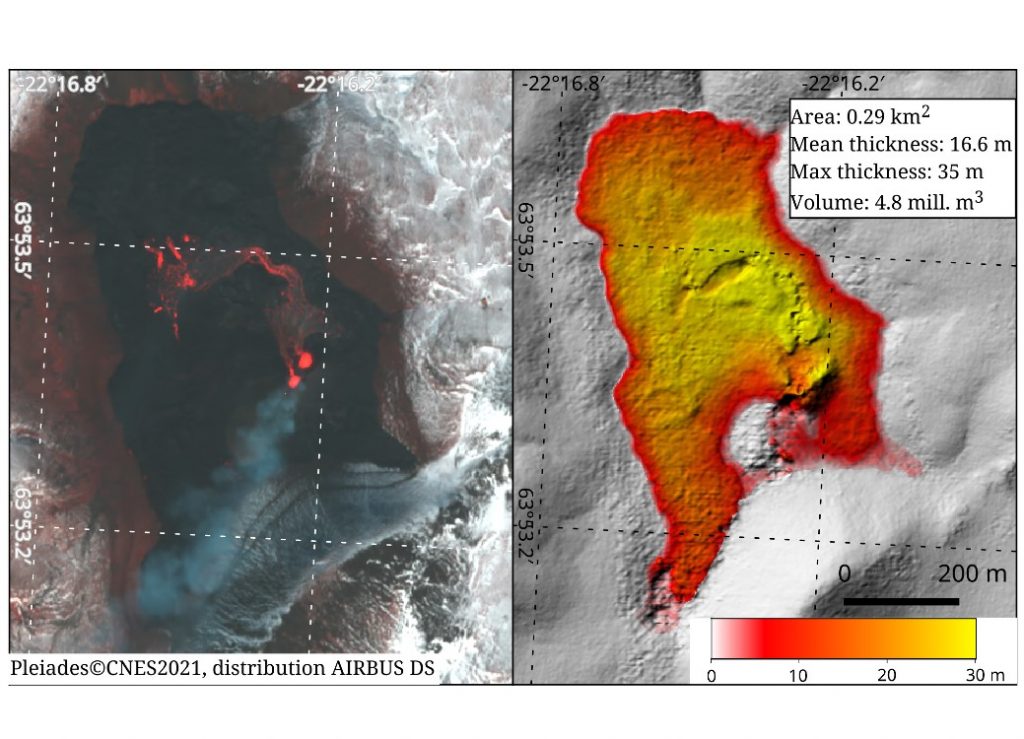Suivi de l’éruption du volcan Fagradalsfjall par Pléiades
Une conférence sur l’utilisation d’une série de couples stéréoscopiques Pléiades pour le suivi en temps réel de l’éruption du Fagradalsfjall toujours en cours en Islande aura lieu le 28 septembre 2021.
Animée en anglais par Joaquin Belart du National Land Survey of Iceland et ancien doctorant au LEGOS, la conférence débutera à 11h en salle Coriolis de l’Observatoire Midi Pyrénées et sera retransmise en direct sur https://zoom.us/j/95930221935?pwd=eWI0ZEEwUFZlNmEyaEFCN1AxeGtuQT09

© Birgir V. Óskarsson, Icelandic Institute of Natural History.
Campagne acquise par Icelandic Institute of Natural History, et financée par la Protection civile d’Islande
“Near-real time monitoring of the Fagradalsfjall eruption, SW Iceland, based on airborne and satellite stereoimages”
On the 19th of March 2021, a volcanic eruption started in Fagradalsfjall, SW-Iceland, after a month of increased seismicity and crustal deformation in the Reykjanes peninsula, tens of kilometers away from Reykjavík. As part of the response plan to these events, we organized a series of near-real time monitoring operations using airborne and Pléiades stereoimages. Through the CIEST2 initiative (CNES), Pléiades stereoimages were obtained in emergency mode daily through the first 10 days of the eruption. By comparing Digital Elevation Models (DEMs), we obtained a time series of lava volumes and the effusion rate of the eruption, which was reported to the Icelandic Civil Defense 5-6 hours after the images were acquired. The derivate products (DEMs, orthoimages, lava thickness maps, lava outlines) have served as a basis for lava flow simulations, hazard assessment and fieldwork logistics. By the 8th of August 2021 (the latest survey), 30 full photogrammetric surveys had been acquired, and the eruption had produced 119±2 millions m3 of lava, with an effusion rate ranging 5-10 m3/s and covering an area of 4.4 km².











